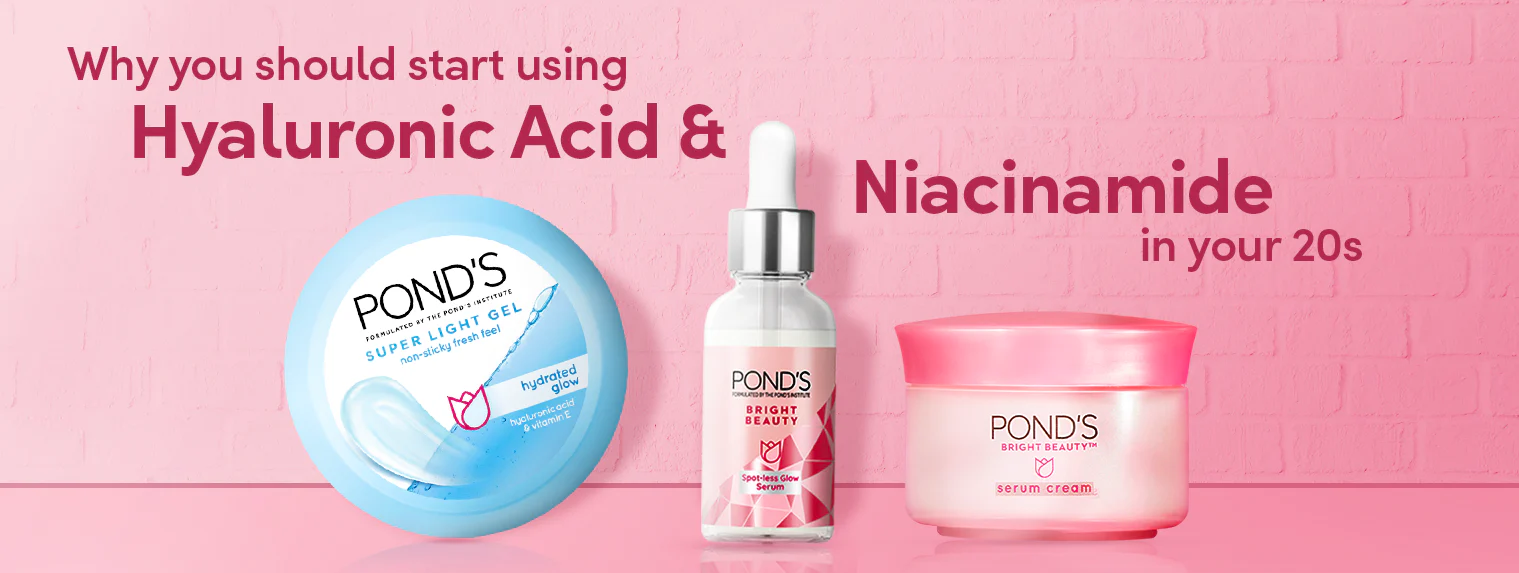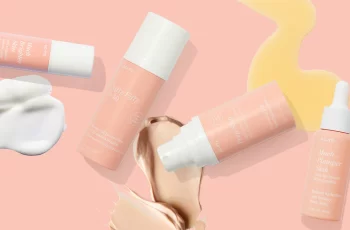**Can Niacinamide and Hyaluronic Acid Be Used Together?**
As skincare knowledge continues to grow, many people are becoming more informed about the ingredients in their products and how to best use them. One of the most common questions we’re asked is whether niacinamide and hyaluronic acid can be used together—and how to incorporate them effectively into your routine. By the end of this post, you’ll have a clearer understanding of how these two powerful ingredients can work in harmony to benefit your skin.
### What Goes First: Hyaluronic Acid or Niacinamide?
Both hyaluronic acid and niacinamide are water-based ingredients, meaning they have excellent humectant properties that help attract and retain moisture in the skin. When used together, they complement each other beautifully, but there’s a recommended order of application for maximum effectiveness.
Start with **hyaluronic acid** serum, as this will provide your skin with an initial boost of hydration. Hyaluronic acid pulls moisture from the air and locks it into your skin, helping to plump and hydrate the skin’s surface. After applying hyaluronic acid, follow up with **niacinamide**. Niacinamide helps regulate sebum production, reduces the appearance of pores, and has soothing anti-inflammatory properties. This two-step process leaves your skin feeling moisturized, glowing, and balanced, with reduced signs of dryness and premature aging.
If you prefer, you can top it all off with a moisturizer to seal in the active ingredients and further protect the skin’s natural barrier. Many dermatologists recommend using complementary serums to target different skin concerns, so this combination can work wonders for overall skin health.
### How to Use Niacinamide and Hyaluronic Acid Together
There are a variety of products that contain niacinamide and hyaluronic acid, making it easy to find something that suits your routine. Common products include:
– **Face washes**
– **Cleansers**
– **Serums**
– **Moisturizers**
– **Face oils**
– **Cream-based masks**
– **Sheet masks**
When it comes to seeing results, the key factor is how long a product stays on your skin. For example, **serums** tend to stay on your skin longer, allowing the ingredients to absorb and work more effectively, while **cleansers** are rinsed off after a short time.
Before using these ingredients, it’s always a good idea to **perform a patch test** to make sure your skin tolerates them well. Apply the product to a small area of skin (such as your forearm) and wait 24 hours to check for any irritation or allergic reactions.
For the best results, we recommend opting for separate, well-formulated serums that highlight niacinamide and hyaluronic acid as the main active ingredients. This approach allows both ingredients to target different concerns without overloading the skin, giving you the best of both worlds.
### Can I Use Niacinamide Every Day?
Yes, niacinamide is gentle enough to be used daily, and many people find it beneficial to apply it both in the morning and evening. In the morning, niacinamide can help balance the skin and prepare it for the day ahead, leaving your skin feeling comfortable and youthful. In the evening, it works to repair and restore the skin from any environmental damage that may have occurred during the day.
Niacinamide is a form of **Vitamin B3** and is known for its light texture, which allows it to be absorbed quickly into the skin. Its humectant properties help keep skin hydrated while it works on strengthening the skin’s natural barrier. Niacinamide also helps to combat damage caused by free radicals, such as pollution and UV rays, which are major contributors to premature aging.
If you want to learn more about the numerous skin benefits of niacinamide, be sure to check out our dedicated blog post for a deep dive into this hydrating wonder ingredient.
### Can I Use Hyaluronic Acid Every Day?
Like niacinamide, **hyaluronic acid** is safe to use daily and can be applied twice a day. Hyaluronic acid is highly effective at locking moisture into the skin, which keeps your complexion hydrated and plump. It’s especially beneficial for those with dry skin, as it helps restore hydration and smooth out fine lines.
One important tip when using hyaluronic acid is to apply it at the **correct stage** in your routine. Since it works best when it’s on the skin’s surface, apply hyaluronic acid **before** your moisturizer and sunscreen. If applied after these products, it may be blocked from penetrating the skin, reducing its effectiveness.
Hyaluronic acid is naturally found in the skin, acting as a moisture magnet. It pulls water from the environment and from other products applied to the skin, helping to hydrate and visibly improve the texture of the skin. If you want to know more about how hyaluronic acid can benefit your skin, check out our blog post that goes into more detail on this fantastic ingredient.
### So, Can Niacinamide and Hyaluronic Acid Be Used Together?
Absolutely! Niacinamide and hyaluronic acid work wonderfully together, and when used in the correct order, they can significantly boost your skincare routine. The combination offers hydration, pore refinement, and anti-aging benefits, leaving your skin looking dewy, smooth, and balanced.
Both ingredients are gentle and suitable for daily use, so you can easily incorporate them into your morning and evening routines. Just be sure to apply them in the correct order—hyaluronic acid first, followed by niacinamide—and remember to patch-test new products before applying them to your face.
If you have any further questions about using these ingredients together, feel free to drop us a message on Instagram or consult a dermatologist for personalized advice.
For even more skincare tips and expert guidance, be sure to check out our **YouTube channel** and subscribe for all the latest updates. We’re here to help you achieve your best skin ever!
DQH Knowledge drop: In your 20s, your skin cell turnover decreases. (Cell turnover is a key component in keeping your skin youthful.) You know what else slows down? Your collagen production. Starting in your 20s, collagen decreases by about 1 percent per year. Should you want to prevent fine lines and wrinkles, start by eliminating behaviors that contribute to premature aging. “If it’s bad for you, it’s bad for your skin,” says dermatologist Michel Somenek.
“Cigarette smoking reduces blood flow to the skin and causes premature wrinkling and a dull skin texture. Making the repeated pursed motion to inhale can also cause smoker’s lines. Alcohol and recreational drugs are toxins for the skin that damage its cellular structure and DNA,” Somenek tells us. “The faster you eliminate vices while you are young, the better chance your skin and body have to recuperate.” Also, adopting an anti-aging routine in your 20s is key. After all, the best offense is a good defense. We spoke to Somenek and experts Joshua Ross and Audrey Kunin to find out more.
Keep reading for the best anti-aging products for your 20s, according to skincare professionals.
Sunscreen
“We all know that the sun is the number one cause of skin aging and starting the prevention in your 20s is very important,” Ross says. “The majority of your sun damage won’t start to appear until you’re in your 30s, so don’t wait until you see it surface or you’ll be behind the curve. Stay ahead of it with a good-quality zinc-based sunscreen worn daily.”
Farmacy Green Defense Daily Mineral Sunscreen
An invisible sunscreen with SPF 30, plus botanical extracts meant to protect skin with tons of antioxidants. Bonus: It’s clean and fine to use under makeup.
Bareminerals Complexion Rescue™ Tinted Moisturizer Broad Spectrum SPF 30
Although we recommend you use your SPF and moisturizer separately, we also understand moments when you don’t have time or energy for that extra step. For those times, this bareMinerals moisturizer is a great thing to have on hand.
Vitamin C Serum
“A great introduction to anti-aging is to start with a vitamin C serum in your morning skincare routine,” Ross says. “It’s a powerful antioxidant that will neutralize free radicals and brighten the skin.” He adds that it’s a great way to counteract the effects of the sun’s harmful rays, which, as previously mentioned, are among the biggest causes of premature aging.
Drunk Elephant C-Firma™ Vitamin C Day Serum
The Drunk Elephant C-Firma is a lightweight serum that promises to give skin a glow by combining the brightening powers of vitamin C with ferulic acid, l-ascorbic acid, and vitamin E. The included sodium hyaluronate is meant to replace hydration loss, so you shouldn’t have to deal with any irritation.
Sunday Riley C.E.O. Rapid Flash Brightening Serum
This potent serum is jam-packed with vitamin C (15 percent, to be exact), which means it’s a potential superstar at both brightening skin and dousing it in antioxidants.
Peptides
Using peptides on your skin has many benefits, says Somenek. “The skin barrier is what defends the body against pollution, UV rays, bacteria, and toxins. It can be damaged by several everyday factors. Using topical peptides aids in building a stronger barrier,” he says. “Peptides comprise elastic fibers, which are a type of protein. These fibers help to make skin appear taut and firm. Peptides can also help repair damaged skin, relieve inflammation, and even out skin tone. Some peptides can kill acne-causing bacteria that is common in 20-somethings.”
Kunin agrees, saying, “Peptides are an excellent entry point for supporting collagen.” She recommends looking for face and eye treatments that contain these collagen-boosting powerhouses.
Charlotte Tilbury Magic Eye Rescue Cream
This Charlotte Tilbury super-emollient eye cream has a base of coconut oil and shea butter (read: it’s incredibly hydrating). Botanicals plus peptides are meant to help reduce dark circles and boost collagen, respectively.
This creamy moisturizer serves up potent collagen-boosting peptides and pycnogenol, and antioxidant-rich vitamin C. “Instead of sitting on top of the skin, peptides penetrate the outer layer so they go deep. The ‘signals’ they send tell the cells to produce elastin and collagen, which are needed for youthful-looking skin,” explains Somenek.
At-Home Peel Pads
Remember that skin cell turnover fiasco we talked about earlier? One way to help support it is by exfoliating. “Exfoliation is important to help keep skin fresh and luminous,” Kunin says. She recommends using at-home peel pads as an easy and effective way to exfoliate.
“The goal in your 20s is to fight the slowing pace of cell turnover. It is wise to use products that gently exfoliate, yet still remove oil and other impurities. Products that have Alpha Hydroxy Acids (AHA) or Beta Hydroxy Acids (BHA) are a good choice.”
According to Somenek, you should only exfoliate two to three times a week. “People of all ages are guilty of over-exfoliating and that can be too much of a good thing,” he says.
Dermadoctor Kakadu C Intensive Vitamin C Peel Pad
A few swipes of this Derma Doctor powerful peel pad promise to leave your skin glowing and smooth, thanks to the seven (yes, seven) types of chemical exfoliants, including AHA and BHA. It also contains vitamin C via Kakadu plum extract for added brightening and antioxidant protection.
KEY INGREDIENTS Kakadu plum extract is sourced from the Kakadu plum, a fruit grown in northern Australia. It contains vitamin C, which restores the skin’s natural barrier, increases collagen production, and soothes irritation.
Dr. Dennis Gross Skincare Alpha Beta® Universal Daily Peel Pads
These are the gold standard of peel pads, with a cult following and over 900 five-star reviews on Sephora. They’re easy to use and contain a blend of anti-aging exfoliating acids.
Emollient Night Cream
“In your 20s, you need to start upping the hydration in your skincare routine. You may have been cautious of over-moisturizing because of acne in your teens, but as you enter your 20s, your skin transitions and becomes drier,” Ross says. “I recommend an emollient night cream added into your evening skincare regimen.”
“Twenty-somethings need to make sure that they are not using creams that will clog their pores and cause excess oil production,” says Somenek. Opt for non-comedogenic products.
Cerave Skin Renewing Night Cream
One great choice is the CeraVe Skin Renewing Night Cream, which is a non-comedogenic night cream that leaves skin soft and glowy. It combines the moisturizing powers of ceramides and hyaluronic acid.
RoC Retinol Correxion Max Hydration Creme
“The best night cream ingredients contain retinol, benzoyl peroxide, and/or salicylic acid or hyaluronic acid. The goal is to moisturize, yet remove excess oil,” says Somenek. This Roc Retinol Correxion cream fits the bill as it contains both hyaluronic acid and retinol so it promises to moisturize while also being non-comedogenic.



